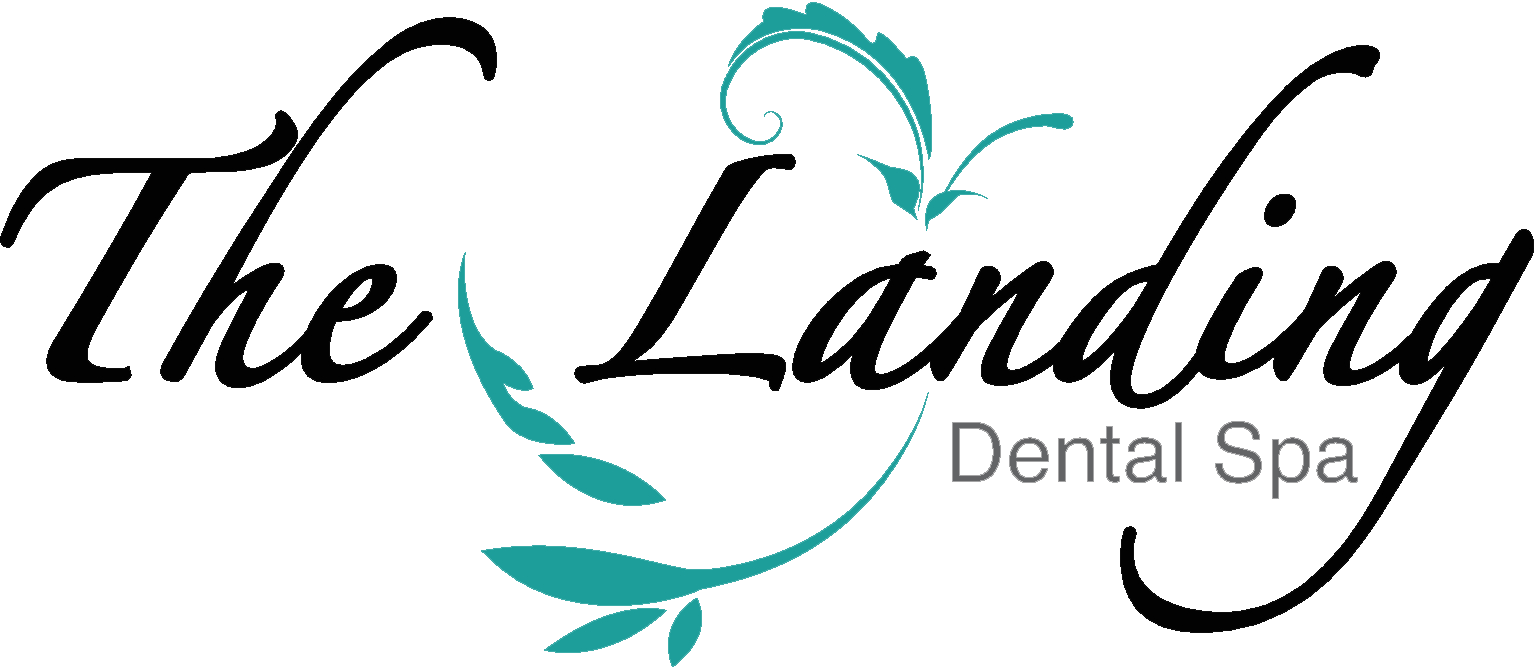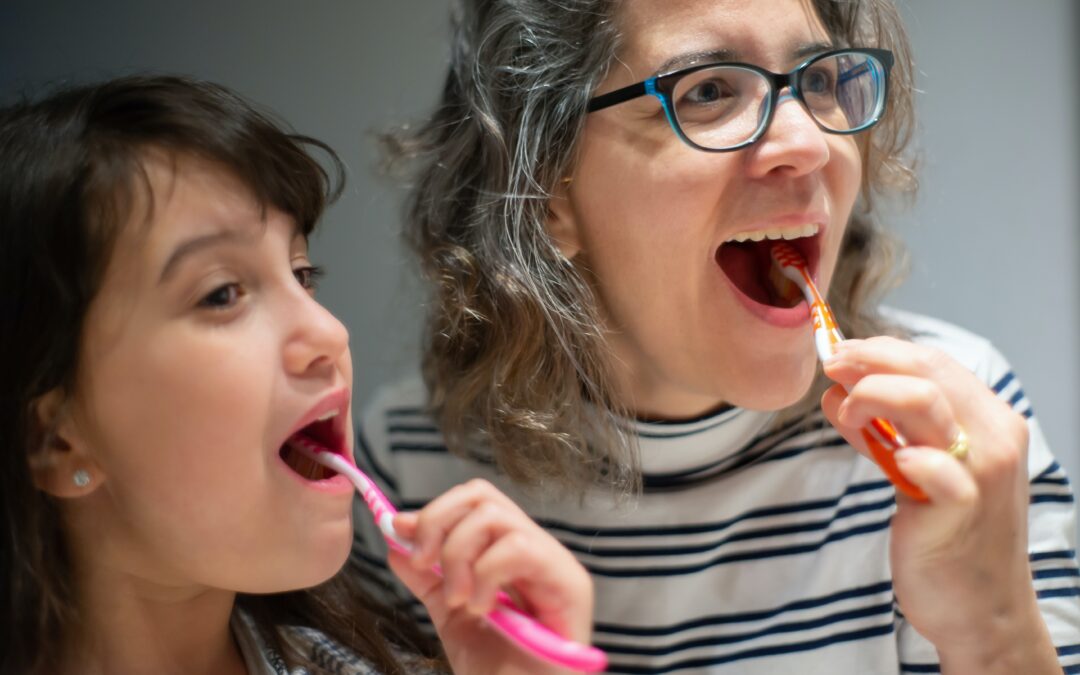Dental hygiene is essential for people of all ages. As the years go by, many adults may be surprised to discover that their oral care techniques need some adjusting too. During National Dental Hygiene Awareness Month, let’s get back to the basics and learn about some essential dental hygiene tips for healthy teeth and gums. Continue reading to learn more.
BRUSH YOUR TEETH PROPERLY
It may not seem like it, but there is a right and wrong way to brush your teeth. If you are unsure about what type of toothbrush you should use, we recommend looking for a soft-bristled toothbrush so that it won’t be abrasive to the enamel on your teeth. Additionally, you want to find a toothbrush with a toothbrush head that fits comfortably in your mouth.
Remember, you should replace your toothbrush at least three times per year; you’ll know it’s time when the bristles begin to fray.
To properly brush your teeth:
- Move your toothbrush in short, back and forth circles at a 45-degree angle.
- Make sure you clean the internal and external surfaces of your teeth.
- Avoid eating for 30 minutes after brushing your teeth.
Please reference this Colgate and American Dental Association “How to Brush” graphic for visual aid.
It’s also essential to make sure your child is also brushing correctly. To learn more, read our blog, How to Teach Your Child to Brush Their Teeth. While speaking of children during dental hygiene month, you can also read a couple of other informative blogs, such as:
FLOSS PROPERLY
It is recommended to floss at least once a day. Cleaning between your teeth will aid in the prevention of cavities, gum disease and plaque. But, do you know how to floss correctly? Learn the steps to flossing here:
- Use about 18 inches of floss, and wind most of the floss around one of your middle fingers. Use the remaining floss and wind it around the same finger of your opposite hand. Make sure to leave an inch or two of floss.
- Hold the floss tightly between your thumbs and index fingers.
- Gently slide it up and down between your teeth.
- Curve the floss into a C-shape around the base of each tooth. Slide it into the space between the gum and the tooth. Be careful not to force the floss; it could cut or bruise delicate gum tissue.
- Rub the sides of the teeth and move the floss away from the gum with up and down motions. Don’t forget the backs of the last molars. Repeat this method on the rest of your teeth. Use clean sections of floss as you move from tooth to tooth.
- To remove the floss, use the same back-and-forth motion to bring the floss up and away from your teeth.
INCORPORATE FLUORIDE
Fluoride is a mineral that occurs naturally and is released from rocks into the soil, plants, water and air. Almost all water contains some fluoride, but usually not enough to prevent tooth decay. Commonly used in dentistry to strengthen enamel, it helps prevent cavities.
Fluoride should be incorporated into your oral hygiene routine. It can be found in many over-the-counter dentistry products for consumers to purchase, such as toothpaste, mouth rinses and supplements. All of these products will help prevent cavities. In addition, prescription mouth rinses that include fluoride may be recommended for those who tend to get a lot of cavities. To learn more about fluoride, read our blog, Fluoride and Its Benefits.
AVOID SMOKING
According to the American Dental Association (ADA), tobacco use is one of the leading causes of preventable illness in the United States, and smoking accounts for approximately 20 percent of deaths. In addition, there are many dental risks associated with smoking and its effects on your mouth and teeth. Some of these risks may even surprise you.
- Bad breath: After being inhaled into the lungs, cigarette smoke is exhaled through the nose and mouth. But even after being exhaled, the smoke chemicals and residue remain in your mouth and airways, which can lead to bad breath. If you would like to learn more about bad breath, check out our blog, What Are the Causes of Bad Breath?
- Tooth discoloration: Tar and nicotine from cigarette smoke can stain your teeth, causing them to turn yellow. Smoking can even discolor your tongue. Remember that these stains cannot be cleaned off at home and must be professionally removed at your dentist’s office.
- Increased risk of developing gum disease: According to the Centers for Disease Control and Prevention (CDC), smoking plays a substantial factor in gum disease in the United States. Smoking weakens your immune system and makes it harder for your body to fight off infections — that includes the damage done from plaque. If you want to learn more about gum disease, check out our blog, Gum Disease: Causes, Symptoms, Treatment and Prevention.
- Increased risk of developing oral cancer: Smoking increases your risk of developing oral cancer, which is a disease that progresses rapidly. If oral cancer is not diagnosed and treated early, it can be deadly; this is one reason why regular dental visits are so imperative.
Other dental problems related to smoking you should be aware of include:
- Inflamed salivary gland openings
- Mouth sores and ulcers
- Gum recession
- Tooth decay
- Loss of teeth
- Loss of bone within the jaw
- Risk of leukoplakia
- Slow healing after a tooth extraction, periodontal treatment or oral surgery
- A lower success rate of dental implant procedures
KNOW WHEN TO VISIT YOUR DENTIST
Dental exams are an essential part of preventive dental care. Preventive dentistry is the practice of taking care of your teeth to keep them happy and healthy. As stated above, brushing twice a day correctly and flossing can help aid in preventive dentistry. Furthermore, maintaining a balanced diet can help keep your teeth and gums strong.
Preventive dentistry aids in the avoidance of cavities, gum disease, enamel wear, gingivitis and periodontitis. To encourage healthy teeth habits, it is recommended that all individuals schedule regular check-ups with their dentist, typically every six to 12 months.
In the meantime, we recommend that you contact your dentist as soon as possible if you notice any of the following symptoms that could suggest oral health problems:
- Red, tender or swollen gums
- Gums that bleed when you brush or floss
- Gums that begin pulling away from your teeth
- Loose permanent teeth
- Unusual sensitivity to hot and cold
- Persistent bad breath or an unusual taste in your mouth
- Painful chewing
DENTAL HYGIENE AWARENESS MONTH | THE LANDING DENTAL SPA
At The Landing Dental Spa, we believe that detecting and treating problems with your teeth, gums and mouth can help ensure good oral health. If you need an appointment but don’t have a regular dentist, fill out our online contact form or give us a call at 304-594-2200. We look forward to hearing from you!


Recent Comments